Cushion Cut diamond and its many faces
A Cushion cut diamond is among the most popular fancy shaped diamonds of this year 2018. Rounded square in shape, and brilliant in sparkle, this cut is unique in its geometry. A cross between square and rectangle, and often one or the other, this cut has round corners which gives it a striking pillow-like form.
Many doesn’t know this, but cushion cut diamonds are of more than one kind. The market sells cushion cuts of two chief varieties, modern and antique. Speaking of types, cushion cuts have different categories of brilliance.
The classic version is called Cushion brilliant (see diagram 1 plot and picture). There is another called modified cushion brilliant. Unlike most diamond cuts, cushion cuts vary in their facet arrangements and shapes. Mathematically, the cut does not have any one architecture which is standard. As a result, what we have in the market is a variation of cuts which are all cushion cuts by definition, but with perceivable modifications.
The cut is not defined by a set of measurements, although there are some basic guidelines that preside the cut.

Diagram 1: Cushion Brilliant Cut picture

Diagram 1: Cushion Brilliant Cut plot
Shop Cushion cut diamond>>>
Special Characteristics
Although a cushion cut diamond is at once identifiable by anyone who is familiar with the nuances of the cut, knowing its special characteristics make the identification easier.
There is room for genuine confusion considering the dissimilarities of the cut. Some have large spread facets which make inclusions obvious to the eyes while others are cut in such a pattern that enhances the natural color of the diamond considers.
The form of cushion is determined by the stone in question. While some could use a little masking, others demand more showing off. The antique-style cushion cuts by rule enrich the color of diamonds making them striking at the first glance.
Size
A cushion cut is versatile, in that, it can make a stone smaller or bigger in its real dimensions. Those that are cut to great depth percentages end up being smaller from the face-up angle. Then there are some that the cut can make to look unmistakably bigger than their real carat weight from the common angles.
The stone with larger facets results in broader flashes that reflect the fire within the diamond. Those with wee facets however have a frosted look like crushed ice. As a result, they display smaller bursts of brilliance and fire, something that is referred to as “multiple-fire”. See diagram 2 below with picture and plot of "Crushed ice" look Cushion cut diamond.
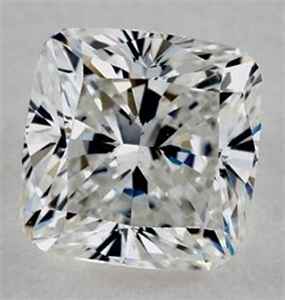
Diagram 2: Cushion Modified Cut, "Crushed Ice" brilliance picture
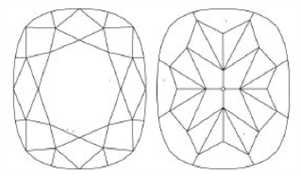
Diagram 2: Cushion Modified Cut "Crushed Ice" brilliance plot
The Cushion Cut Diamond Guidelines
As mentioned before, the cushion cut is not restrained by any strict guidelines. That gives cutters some room for improvisation. However, for cushion cuts, one does not want to cut too deep or leave it too shallow. Speaking particularly of Modern Cushion cuts, the depth range of the depth goes to 60 to 70% and table is between 57 and 70%. The crown is between 8 and 15.
It can be either a square or a rectangle or something in between, depending on the buyer’s liking. Unlike other cuts, a cushion cut can be eyeballed for quick and moderately accurate judgment. You can of course turn to a vendor with pictures when buying online.
Cushion diamonds have existed for many years now, but its shot to popularity in recent times is attributed to the revival of the famous Art Deco fashion. During this fashion revival, the classics that used to be common in the 1930s came to the forefront.
The cushion cut is one of those staples of the time, which quickly gravitated a lot of attention. In the 19th Century, cushion cut was a hot favorite. Around that time, these cuts were crafted with hands, in lack of precise instruments.
The cut was characterized by its signature pillow shape. Some of these cushion cuts were classified as that Old Mine Brilliant the key traits of which are chunky facets, over 40% crown angles, culets the size of medium to large and very small tables.
As the demand shot up with the price hot on its heels, the cuts were modified and re-cut. The older diamonds adapting new tastes disappeared from the market. The residual diamonds were those that has faint colors from grade K through O and has a hint of yellow inside. Today, the cutters have reprised the cut and with new sets of tools and select specialties. What we see in the market today, both modern and antique-style cushion cuts are the modern versions of the Old Mine Brilliants.
Most fancy cuts like oval, radiant, pear, heart and marquise come in various forms. The cushion cut is no different than that others in its league in that. It brings the buyers a bunch of options in terms of facet measurements, alignments, ratios and such things. The details can be customized as preferred to give the stone an identifiably different look.
In today’s market, the cut goes by various names, each specific to a particular characteristic. The names however do not represent the light performance for each type can be optimized to the highest light performance possible in its architecture.
Cushion Cut with Crushed Ice Look
The cushion modified brilliant version of the cut was adopted as standard by the global jewelry industry since it topped the popularity meter some years back. About 98% of the sample population voted for this cut in the survey that established the wild popularity of this variant of cushion cut.
Among other things, the final polished finish of the cut and its least amount of carat loss are two characteristics that cutters love about this cut. This version of cushion cut helps meet a cutters goal of maximizing the brilliance of a diamond while retaining most of its mass. This maximizes the profit margin of the manufacturer and reduces the price of the stone at the buyers’ end. So, it’s a win-win for both.
The modified cushion cut features short pavilion facets towards the heart of stones, which in classic brilliant cushion cuts is longer. These facets then dive downward to meet the girdle area in the middle. Please see diagram 3.This sparks up a brilliance in the exterior façade, especially around the crown which gives the stones a character of their own.
However, one may wonder why then all cushion cuts are made the same way to attain optimum brilliance. That’s because weight loss is directly related to this. Short pavilion facets equal minimum weight loss. The meaning will be that 1 carat of Cushion Brilliant will always be larger in mm size than 1 carat modified Cushion. It will be possible to obtain a 1 carat polished Modified Cushion where if made Cushion Brilliant will yield only a polished in the 0.90s carat.
That and the fact of the larger mm side is the explanation why a Cushion Brilliant should cost more.
The bottom line is, though the crushed ice version of the cushion cut minimum carat loss which gives the stone a bigger carat weight.
There are endless options of modifying a Cushion cut diamond, see another Multiple facets Modified variation picture and plot below in diagram 3.
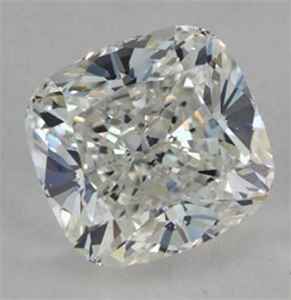
Diagram 3: Multiple Modified Cushion picture
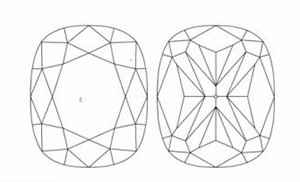
Diagram 3: Multiple facets Modified Cushion plot
Cross Effect Cushion
The cross effect modified cushion is another variant that has become dramatically popular among the mass over the passing years. The cut, not significantly different from the standard cut has some unmissable qualities which sets it apart from the rest. The changes occur mostly in the facet counts.
The cross-effect cushion cut, in effect, has twice the number of facets as the former. That gives it double the brilliance. Other modifications like bigger table size and elevated crown add to the full effect, making it a discernibly more refined cut than all others.
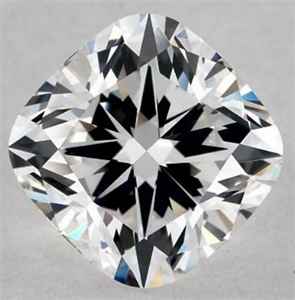
The Set Ratios of Cushion Cut
Although cushion cuts have no set numbers which gives cutters the freedom to make improvisations here and there to improve the cut further, there are some ratios which have been maintained over the years. These ratios can be obtained by dividing the length of the diamond by its width.
Figures inside of 1.054 are geometrically square and those upwards of 1.055 are viewed as rectangles. The ratios that form rectangles are more difficult to form as compared to others because they overlap with the geometries of other cuts like oval and radiant. So, it is quite possible to end up creating one shape instead of other owing to seemingly innocent and inconsequential oversights.
Ratios that are over 1.25 look increasingly closer to oval cuts than cushion cuts. There is a blurry line in between which only the most skilled cutters can observe. That’s why ratios higher than 1.25 are normally not recommended because of the risks of mistakes involved.
In the end, these ratios have the final impact on the style of a jewelry. As they are subject to personal choice, jewelers only follow the wishes of the buyers when it comes to the specific shapes of the cuts.
Overall, this article attempts to offer the readers an introduction to cushion cut diamonds. A quick read will tell you what your choices are in cushion cut. Hopefully, the descriptions attached will make selection a little easier than it was before.
This article only aims to narrow down the scopes of choices so that you know precisely what you want for your engagement ring. It also sheds some light on what’s popular and what’s in at the time so that your choice is well-aligned to the ongoing trends.
Conclusions for choosing Cushion Cut diamond for an engagement ring.
If the Cushion is cut between the ranges mentioned in the "Guidelines "paragraph it will be in the range of Ideal Cut in the thumb rules of the trade, no matter the facets combinations.
If it will be also a Cushion Brilliant or Cushion Brilliant Modified (the cross effect cut) it will also have a bigger mm size compared to the same carat diamond.
Choosing a Cushion Brilliant or Cushion Modified is more a matter of personal taste of the looks of it.
***
Find your Cushion Cut Diamond HERE
***
Shop engagement rings that can accommodate Cushions